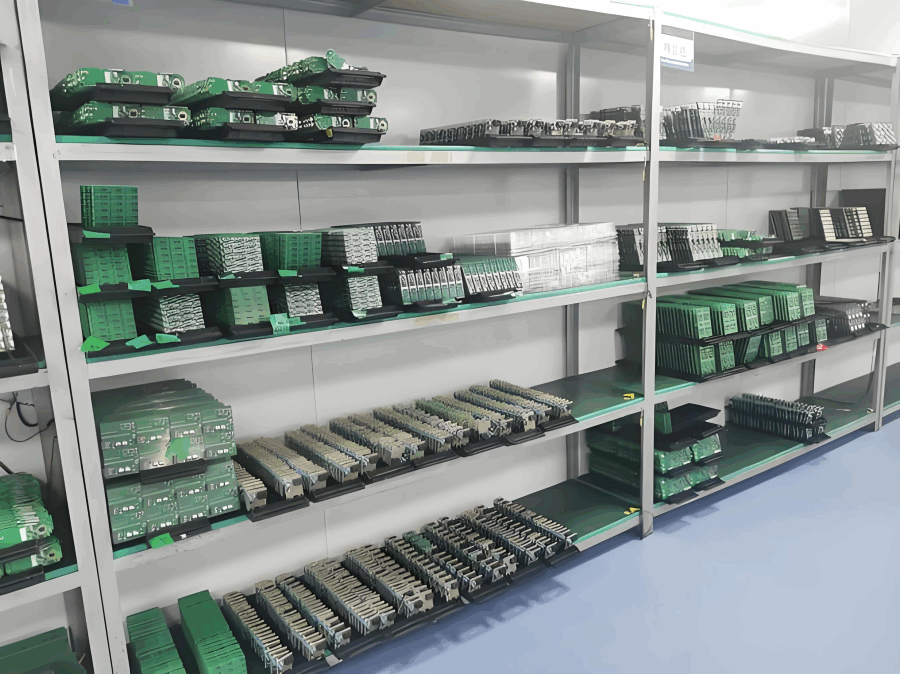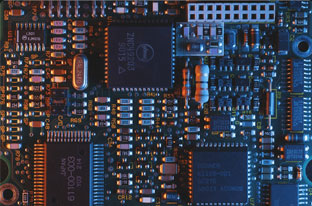* On your first PCB Assembly order!
* Up to $300 discount
 C - A L L E Y
C - A L L E Y 
Home | Events | PCB | About Us | News | Contact Us
Introduction
In the world of electronics manufacturing, tiny things matter in a big way.
As the warehouse manager at a professional PCBA (Printed Circuit Board Assembly) facility, I’ve seen firsthand how the humble act of storing electronic components can make or break a finished product. While storage may seem like a back-office task, it plays a front-line role in ensuring consistent quality, minimizing production risks, and protecting your product's performance in the field.
In this article, I’ll walk you through how we professionally manage the storage of electronic components—and why that matters to you as an OEM or electronics brand.
Why Component Storage Is More Than Just Shelving
Electronic components are not like screws or bolts. Many of them—especially ICs, BGAs, capacitors, and LEDs—are sensitive to moisture, static electricity, oxidation, and temperature fluctuations. Improper storage can silently degrade their performance long before they’re soldered onto your PCB.
That's why at our facility, component storage is governed by strict protocols based on IPC/JEDEC standards (such as J-STD-033, J-STD-020, and ANSI/ESD S20.20).

PCBA Component Storage
Key Storage Parameters We Monitor Closely
1. Temperature Control
Most components are best stored at 15°C to 30°C (59°F to 86°F). This range prevents thermal degradation of packaging materials and solderability issues.
Too Hot? Leads can oxidize, plastic packages may warp, and humidity can spike.
Too Cold? Moisture may condense when moved to room temperature, risking internal corrosion.
We maintain climate-controlled storage rooms to stabilize temperature and prevent thermal cycling.
2. Humidity Control – The Silent Threat
Moisture-sensitive devices (MSDs) such as BGAs, QFNs, and certain ceramic capacitors can absorb moisture from the air. If soldered while moisture is trapped inside, the rapid vaporization during reflow can cause “popcorning”—microcracks that may lead to functional failure.
Our practices include:
Storing MSDs in dry cabinets with <5% RH.
Using vacuum-sealed MBBs (Moisture Barrier Bags) with desiccants and humidity indicators.
Re-baking components as per JEDEC J-STD-033C when dry storage is compromised.
3. ESD (Electrostatic Discharge) Protection
Just 100 volts of static electricity can permanently damage sensitive ICs. Our warehouse is a fully ESD-safe zone, equipped with:
ESD epoxy flooring and grounded workstations
Antistatic bins, trays, and packaging materials
Mandatory ESD wrist straps, gloves, and smocks for all handling personnel
Strict adherence to ANSI/ESD S20.20 protocols
4. Shelf Life and First-In-First-Out (FIFO)
Some components, especially solderable items like tin-plated terminals or alloyed pads, have limited shelf life. We implement a FIFO system backed by ERP software to ensure components are used before their expiration.
Each reel, tray, or tube is barcoded with date code, lot number, MSL level, and storage expiry.
We generate alerts for nearing expiration or baking requirements.
5. Light, Dust, and Contamination Protection
Optoelectronic components (like LEDs and image sensors) are sensitive to light and environmental contamination. We store them in opaque packaging and keep storage zones dust-free with HEPA filtration.
Additionally, all incoming materials are:
Visually inspected
Checked against datasheets and purchase orders
Quarantined if packaging is compromised

PCBA Component Storage
Risks of Improper Storage – What Can Go Wrong?
Let’s talk about the hidden dangers:
| Storage Mistake | Potential Result in Final Product |
| High humidity | Popcorning during reflow, latent failures |
| High temperature | Oxidation, reduced solderability |
| Static discharge | Intermittent or complete IC failure |
| Shelf life exceeded | Component degradation, poor solder joints |
| Mislabeling | Wrong component usage, board failure |
These risks often don’t show up in early testing, but may cause field returns, shortened product life, or inconsistent performance—damaging both your brand and your bottom line.
Our Promise: Quality from Warehouse to Workbench
We don’t just store components—we preserve their integrity. At our PCBA facility, storage is part of our quality assurance process.
Every component is traceable.
Every environment is monitored.
Every process is documented.
From passive resistors to complex BGAs, we ensure each part is ready for flawless SMT assembly, free from contamination, degradation, or risk.
Because in electronics, what you don’t see can hurt you—and we’re here to prevent that.
Final Thoughts: The Hidden Foundation of Quality Electronics
So next time you're evaluating a PCBA supplier, don’t just ask about their SMT line or AOI inspection—ask how they store and handle your components.
That’s where quality really begins.
At our facility, we believe great products are built on great processes—from the warehouse to the final wave solder. We’d be proud to show you how we do it.
Want to learn more about our PCBA quality standards?
Contact us or request a free quote—we're ready to build your next reliable product.

Please send Email to kspcba@c-alley.com or call us through +86 13828766801 Or submit your inquiry by online form. Please fill out below form and attach your manufacturing files( PCB Gerber files and BOM List) if need quotation. We will contact you shortly.
 +86 13828766801
+86 13828766801 kspcba@c-alley.com
kspcba@c-alley.com https://www.kingshengpcba.com/
https://www.kingshengpcba.com/ 2/F, Building 6, Tangtou 3rd Industrial Zone, Tangtou Community, Shiyan Town, Baoan District, Shenzhen, China, 518108
2/F, Building 6, Tangtou 3rd Industrial Zone, Tangtou Community, Shiyan Town, Baoan District, Shenzhen, China, 518108